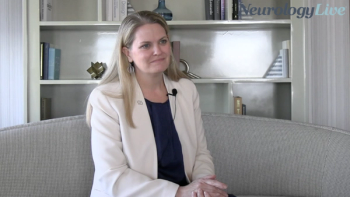
Significance of New MOGAD Diagnosis Criteria, Inclusion of MOG-IgG: Anastasia Vishnevetsky, MD

An immunology fellow at Brigham and Women’s Hospital provided perspective on the positive impacts a new diagnostic criterion for MOGAD brings to the clinical community. [WATCH TIME: 4 minutes]
WATCH TIME: 4 minutes
"We have some patients who have elevated MOG antibodies and have headache, or numbness and tingling that comes and goes in an inconsistent way. But they’ve never had any kind of discrete event, and those patients wouldn’t qualify as having the diagnosis."
In the past decade, the availability of cell-based assays for detection of serum antibodies against myelin oligodendrocyte glycoprotein (MOG) has increased, allowing clinicians to differentiate from other similarly presenting demyelinating syndromes. Previously, some adults and children who have optic neuritis and longitudinally extensive transverse myelitis or who have been previously classified as having aquaporin-4-seronegative neuromyelitis optica spectrum disorder (NMOSD) have now been identified as having serum MOG-IgG. Earlier this year, an international panel of pediatric and adult neurologists came together to propose diagnostic criteria for MOG-antibody associated disease (MOGAD), with the presence of MOG-IgG as a core criterion.
Led by Brenda Banwell, MD, the proposed criteria stated that MOGAD is typically associated with acute disseminated encephalomyelitis, optic neuritis, or transverse myelitis, and is less commonly associated with cerebral cortical encephalitis, brainstem presentations, or cerebellar presentations. In addition, Banwell and others advocated for testing for MOG-IgG in appropriate populations, and cautioned the testing of patents with clinical and radiological features typical of multiple sclerosis. Above all, these guidelines laid the first major foundation of diagnostic criteria for MOGAD, a disease that has been often confused with MS or NMOSD.
As part of MOGAD Awareness Month, NeurologyLive® sat down with
Newsletter
Keep your finger on the pulse of neurology—subscribe to NeurologyLive for expert interviews, new data, and breakthrough treatment updates.


































